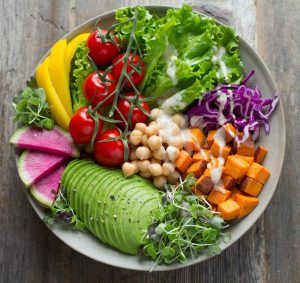 By Lee Van Ham
By Lee Van Ham
Key to all our actions to building a stronger OneEarth food system is being guided by the OneEarth Paradigm. Do our food decisions strengthen the OneEarth agriculture paradigm? The more times we can answer “Yes,” the more our actions are making a difference for Earth’s benefit and ours. Every time we need to answer “No,” we are reminded that we need to look for a different choice. That said, sometimes our choices are not cleanly in one or the other, but on a continuum. When that is the case, let’s move as close to OneEarth agriculture as we can.
Agri-business is much more profitable than agri-culture. — Wendell Berry
Lee, there is a world of difference between agri-business and agri-culture. — spoken to me by Bert Evans (1921-1971), former agronomy professor at University of Nebraska, Lincoln, farmer, cattle breeder
OneEarth Agriculture |
MultiEarth Industrial Agribusiness |
| Partnership | Domination |
| hierarchy of actualization | hierarchy of control |
| Earth community | empire, superpower, transnational |
| all land is sacred and revered as holy | land is for our use, not for reverence |
Specific to Food
| Post-industrial agri-culture | Industrialized agri-business |
| little government support | biggest government support |
| low-access to gov’t policy | high access to gov’t policy |
Distribution & Purchase of food
| cooperatives | corporate chains |
| farmers markets, cooperatives | supermarkets |
| local preferences | national & global markets |
| low packaging preferences | packaging for competitive advantage |
| local economy primary | global economy primary |
| shareholder in a CSA | shareholder in a food corporation |
|
(community supported agriculture) |
|
| restaurants that serve local, organic | restaurant chains that serve global |
| slow food movement | fast food movement |
Processing of Food
| health priorities | shelf-life priorities |
| nutritional factors | convenience factors |
| homemade and small batches | mass produced |
Production of Food
| smaller farms, urban farming | huge farms |
| low industrialization | high industrialization |
| local food sovereignty | import-export model |
| to be soil is a treasure enhanced | soil is a medium to be used |
| roaming animals | confinement of animals |
| natural fertilizers | chemical fertilizers |
| pesticide free | pesticide dependent |
| traditional farming (organic, regenerative) | green revolution |
| seed preserved as commonwealth | seed patenting for private wealth |
| intentional biodiversity | monoculture “efficiency” |
| labor intensive | machine intensive |
CAUTIONS in using this chart:
- Use it for learning, not for judging yourself or others. But when a poor decision is made, consider if there are ways to act in the future that are more aligned with OneEarth ways.
- Recognize that no matter how you reconfigure your personal lifestyle, it is virtually impossible to achieve an ecological footprint that uses only the resources of one planet. Reason? Because the U.S. has created an infrastructure that supports MultiEarth living and needs to undergo radical transformation before OneEarth living is personally possible. Nonetheless, reducing our ecological footprints as low as we can has enormous impact on our souls, communities, and the planet. See https://www.footprintnetwork.org/footprint-calculator-faq/#gen6 For example, mine is currently just over 2 planets.
The above chart shows how truly different the agri-business and agri-culture paradigms are. Which one we choose is now a moral and spiritual choice, and our choices make real differences in peoples’ lives. Our choices end or continue hunger and malnutrition, and decrease or increase ecological wellbeing of oceans, rivers, soils, and air.
Photo by Anna Pelzer on Unsplash





